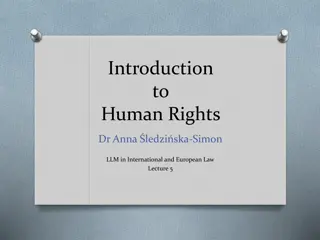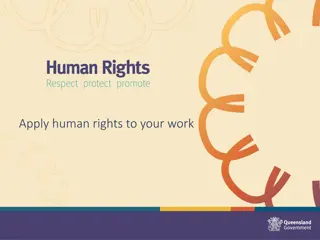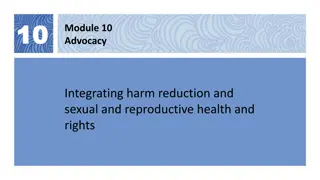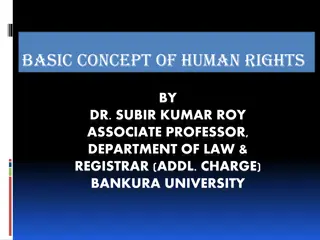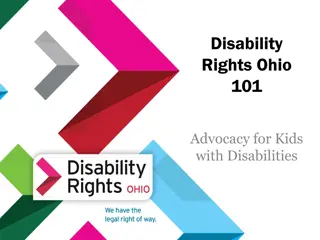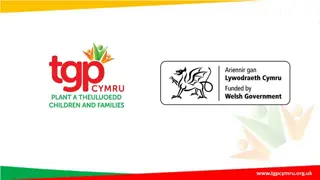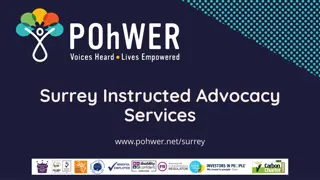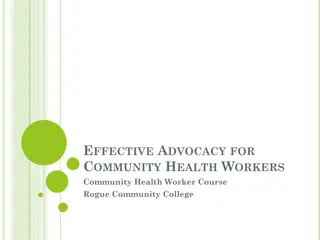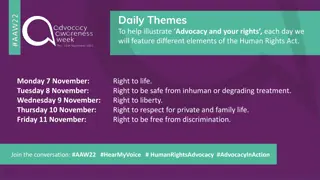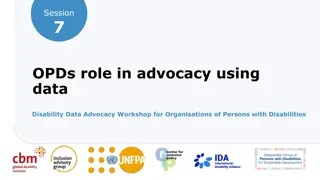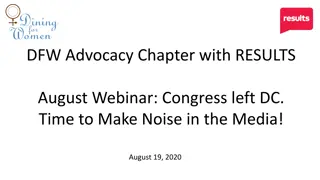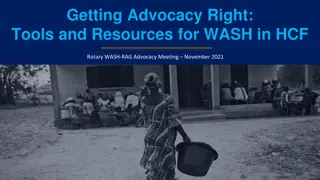Empowering Human Rights Advocacy Through Innovative Webinar Approach" (63 characters)
Explore the journey of the National Social Security Rights Network in utilizing international human rights norms to drive change in the Australian context. From identifying needs to engaging pro bono partners, learn how advocacy tools are designed to address specific rights issues affecting marginalized groups. Dive into thematic areas like family violence and self-determination, and discover how networks can enhance advocacy efforts through structured reporting and engagement opportunities.
Download Presentation

Please find below an Image/Link to download the presentation.
The content on the website is provided AS IS for your information and personal use only. It may not be sold, licensed, or shared on other websites without obtaining consent from the author. Download presentation by click this link. If you encounter any issues during the download, it is possible that the publisher has removed the file from their server.
E N D
Presentation Transcript
CLCQ Webinar Human Rights Advocacy
Format of Webinar 1. Context & Background: Bill (10 minutes) 2. The Tool: Jessica (15 minutes) 3. Engaging in Advocacy: Bill (15 minutes) Questions: Remaining Time
1.1. Context National Social Security Rights Network Regularly engaging in law and policy analysis and commentary Identified that international human rights norms apply to the Australian domestic context Identified that a contextual, multi-faceted approach was needed
1.2. Background Identified need within National Social Security Rights Network (mid 2017) Initial mapping process (mid 2017) Initial Scoping Paper at NSSRN Conference (late 2017) Agreement within NSSRN to proceed (late 2017) Reach out to pro bono partners Wotton Kearney (early 2018) Co-design of the Tool (early 2018)
2.1. The Tool Introduction General Rights Specific groups Asylum seekers Children Persons with disability Indigenous persons Women in RRR areas
2.2. Thematic Areas Thematic areas Family violence Robo-debts CDEP, Work for the Dole Drug testing Family assistance Income management Adequacy of payments Paid parental leave Self-determination
3. Advocacy Undertake a similar design process to the NSSRN Identify Rights Base General rights Specific rights Thematic issues Identify Reporting Structures Member states/Signatories Optional Protocols, Individual Complaints General comments Thematic mandates/Special procedures
3. Advocacy Network Engagement Opportunities: All networks of NACLC have the opportunity to design their own tool based on general rights, specific rights and thematic issues All networks of NACLC have the opportunity to feed into shadow-reporting processes (Human Rights Network) and special procedures Work with other like-minded or thematically linked NGOs Join networks already engaged in advocacy for mentoring and guidance Add weight to shadow reports through endorsement
3. Advocacy Targeting domestic issues through International human rights obligations provides another layer to commentary It gives you a range of substantive and normative issues to assess domestic measures It informs domestic processes with international best practice, contemporary approaches and global jurisprudence It introduces you to thematic research from a range of cultural, disciplinary and political perspectives




